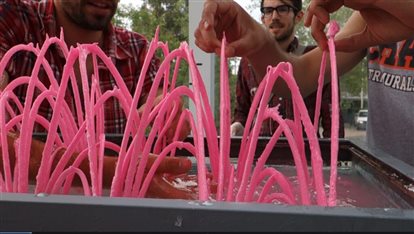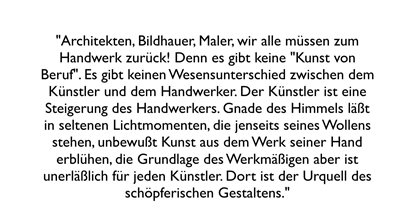Op 3 juli 2014 vond het symposium
Computation, craftsmanship and crisis: reviving design in the digital age plaats.
Oftewel: wat zou het Bauhaus vandag zijn? Now.
Als afsluiting van twee jaar lang gastdocent in Dessau aan het DIA organiseerde Jasper de Haan samen met Lara Schrijver en Arie Graafland dit symposium.
Met onder andere de volgende sprekers:
Alfred Jacobi, Axel Kilian, Arie Graafland, Jasper Cepl, Andri Gerber, Bas van Beek, Lara Schrijver en Phil Ayres

Gropius wrote, in April 1919:
“Es gibt keinen Wesensunterschied zwischen dem Künstler und dem Handwerker”
(There is no essential difference between the artist and the craftsman)
This statement, founded on principles formulated earlier by Henry van de Velde, draws a line from the Arts and Crafts movement into an industrial and collaborative future. It positions architecture as a craft founded on aesthetic, technological and industrial innovation.
Today, this statement may ring even more true than it did 95 years ago.
For today, we are surrounded by possibilities to expand our craftsmanship with personalized software and digital fabrication tools. The position of the artist has been radically transformed in the network society. The available audience has expanded beyond comprehension, while social media now offer a continuous stream of Warhol’s ’15 minutes of fame’. The sheer availability of lectures, reproductions of art, tutorials and online courses, lectures, debates, and blogs have changed the playing field to an open network of ideas, virtually independent of place.
As we now look back on the remarkable history of the Bauhaus, it is striking how influential its ideas were. The mere 14 years of the school’s existence have continued to inform many other curricula in its wake. We suggest here that the foundation of the Bauhaus and its curriculum also exemplified a particular strain of thinking that is still powerful today. The conjoining of the arts and industry, of craftsmanship and of industrial fabrication led a way forward into what we might now call ‘design thinking’: the type of thinking that cannot be fulfilled without actually getting one’s hands ‘dirty’ – without trying things out.
This symposium brings together designers and researchers from the field of architecture and design to reflect on the particular opportunities and challenges of digital fabrication, and on their effects on the field as a whole.

3 juli 2014